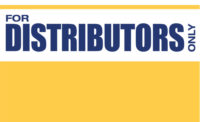Oil and gas industry safety spending rebounds
Based on exclusive ISHN reader research

Executive Summary
BNP Media’s Market Research Division, in conjunction with ISHN, conducted a survey of the 2017 safety and health plans of oil and gas and utility/energy professionals. The online survey was conducted in January 2017.
The biggest news regards resource allocation plans. Parallel to economic forecasts predicting a comeback in U.S. oil and gas business this year, 41 percent of those surveyed report their safety and health budgets will increase in 2017. Ten percent expect budgets to increase significantly; 31 percent anticipate slight increases. Only 11 percent say budgets will decrease.
Parallel to forecasts of increased hiring in oil fields this year, about one-third of respondents (31 percent) report the number of safety and health employees will increase in 2017.
Salaries
Oil and gas industry and utility/energy jobs in general have been well-paying, and that holds true for safety and health professionals. The mean annual gross salary of pros is $116,503, according to the survey. That’s substantially higher than the mean annual gross salary of all safety and health pros throughout all industries — $79,503 — as reported in ISHN’s 2017 State of the EHS Nation reader survey. Labor statistics have shown oil and gas industry workers average about $125,000 in annual salary.
Salary correlates to age, years of experience, and professional certifications. Sixty-nine percent of oil and gas industry survey respondents are between ages 50-69, with 51 percent having between 21 – 40 years industry experience, and 29 percent holding the Certified Safety Professional (CSP) credential.
PPE purchasing
Personal protective equipment (PPE) is essential in high-risk oil and gas jobs, and more than eight out of ten survey respondents will be purchasing eye and face protection, head protection, and hearing protection in 2017. About three-quarters will be purchasing fire-resistant (FR) clothing, hand protection, high-visibility clothing, and fall protection equipment.
High priority purchases in non-PPE areas are: confined space monitoring, safety signage, exposure monitoring, safety lighting and first aid kits.
As evidence of the widespread use of PPE in the oil and gas industry and utility and energy businesses, nine out of ten survey respondents report workers currently wear eye and face protection, head protection, hand protection, fall protection, and foot protection. Eight in ten respondents report workers use hearing protection, high-visibility clothing, and FR clothing.
Top hazards
PPE usage ties directly to the hazards workers face in the oil and gas industry and utilities and energy businesses. Hand and arm injuries are a hazard reported by 60 percent of respondents; 58 percent sat eye and face injuries are a hazard; and 53 percent say working at heights is a hazard.
Other industry hazards reported:
- Slips, trips and fall – 82 percent
- Hazardous energy control/Lockout-Tagout – 77 percent
- Confined spaces – 56 percent
- Motor vehicle related accidents – 55 percent
- Electrical hazards – 53 percent
- Working in extreme temperatures – 50 percent
- Noise – 37 percent
- Explosions and fires – 35 percent
- Respiratory hazards due to chemical exposures – 32 percent
Obtaining PPE compliance
How do industry professionals plan to ensure PPE use? Here are some reported action plans:
- Increased training
- Computer-based training
- Vendor training
- Refresher training
- Tracking training
- Competency testing
- Safety meetings
- Job analyses with videography
- Ongoing inspections
- Improving quality of inspections
- Scheduling PPE replacements
- Empowering employees to look after their own PPE
- Job observations
- Buddy checks
- Random checks
- Unannounced audits
- Peer pressure
Top challenges
Aside from PPE compliance, survey respondents ranked their top organizational safety and health challenges for 2017:
- Employee safety-related discipline – 61 percent
- Safety and health policies/codes/goals – 58 percent
- Making new technology work for safety and health applications – 56 percent
- Putting safety on equal footing with other operations – 56 percent
- Compliance with OSHA regs – 53 percent
- Dealing with expanding workloads – 50 percent
Action plans
Survey respondents gave a variety of action plans to handle discipline problems. These include both employee and supervisory training, improved contracts with contractors, enforcement, establishing cardinal safety rules, lifesaving rules reinforcement, using a “brother’s / sister’s keeper” format, increasing management accountability for discipline, leadership training, and improving the consistency of disciplinary actions.
One respondent cited use of a “culpability tree” to determine whether discipline is appropriate. Another spoke of using a disciplinary matrix that will help supervisors with guidelines on disciplinary actions.
Adopting new technology
How do professionals plan on making new technology work for safety and health applications? Some of the ideas reported:
- Explore the use of iPhone apps and apps for iPads/tablets
- Rely more on smartphone technology and email
- Use smartphones to track driver information
- Install GPS tracking in company vehicles
- Purchase man-down two-way radios
- Use RFID tags for confined space entry
Equal footing
As for the age-old challenge of putting safety on equal footing with other operations, survey respondents report a variety of approaches:
- Develop a strong safety culture from the top down
- Continue to build a strong safety culture
- Top management starts all meetings with safety; all safety incidents are reported in depth
- Use the three-legged stool principle: safety, quality and production – one is not any more important than the other
- Benchmarking
- Management paradigm shift
- Management step change
- Quarterly conferences with contractors
- Continue to push supervisor involvement in safety
- Using real-life accounts of injuries and injury narratives
Coping with long work hours
The long work hours of employees are a challenge for many industry professionals. Survey responses show an increased use of fatigue management programs. Other solutions include:
- Regular employee breaks
- Rest breaks
- Rotate workers if a job is planned to last longer than 12 hours
- Rotate extra hours among all employees
- Increased automation
- Hiring more employees
- Provide on-site wellness clinic
- Offer free yoga class
- Better communication from management on the use of employee assistance programs
Top goals
Finally, the survey asked industry professionals about their top safety and health goals for 2017. Not surprisingly, goals tied directly to challenges and hazards. The top goals reported:
- Develop and/or improve your safety culture – 60 percent
- Safety training for new hires and refresher training – 58 percent
- Improve housekeeping to reduce slips, trips and falls – 53 percent
- Improve oversight of contractors – 52 percent
- Reduce ergonomic injuries – 40 percent
- Reduce motor vehicle accidents – 40 percent
- Reduce serious injuries and fatalities – 37 percent
- Protect lone workers – 24 percent
Looking for a reprint of this article?
From high-res PDFs to custom plaques, order your copy today!






